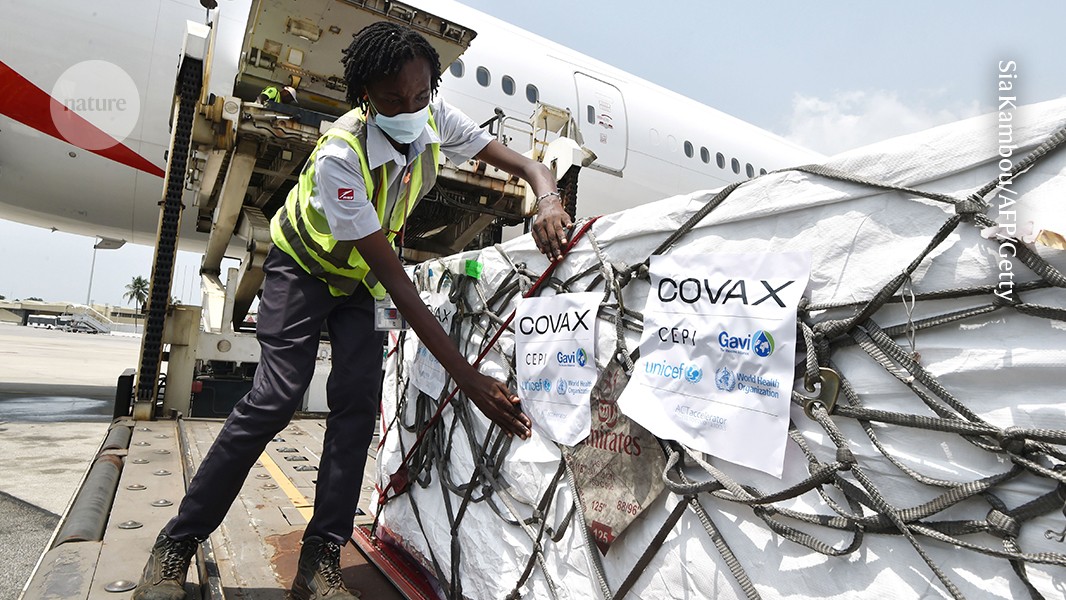Learn COVID pandemic lessons — before it’s too late

Five years after the start of the COVID-19 pandemic, public weariness and irresponsible politics are hampering an effective response to global infectious-disease outbreaks

Low-and-middle income countries did not receive sufficient shipment of SARS-CoV-2 vaccines during the COVID-19 pandemic.Credit: Sia Kambou/AFP/Getty
How would the world cope if another infectious disease with pandemic potential were to emerge, as COVID-19 did five years ago?
The answer is, we simply don’t know. In some respects, there are grounds for optimism. For example, mRNA vaccines came of age thanks to rapid progress in research and technology — much of which occurred during the pandemic. Low-and middle-income countries’ capacity to make vaccines is greater now than it was in 2020, although there is still a long way to go before they are self-sufficient. Nations have improved their systems for infectious-disease surveillance and have a better understanding of how to design fast clinical trials for testing vaccines and treatments during a crisis.
But in other respects, countries seem as ill-prepared now as they were on 30 January 2020, when the World Health Organization (WHO) declared COVID-19 to be a public health emergency of international concern. When it comes to political will and financial backing, many have recoiled from taking the steps necessary to bolster pandemic responses. Politicization of the COVID-19 pandemic has stigmatized public-health authorities and guidance in some countries, and increased vaccine hesitancy.
Without swift action to increased preparedness, countries will again be caught flat-footed when the next pandemic strikes. “The science will deliver if we have a new emerging infectious disease,” says Joanne Liu, a paediatric emergency-medicine specialist at McGill University in Montreal, Canada, and a former international president of the medical-aid organization Médecins Sans Frontières (also known as Doctors Without Borders). “I think it will be the people who aren’t going to deliver.”
There is no way to know where or when that new infectious disease will appear. A potential candidate is the strain of H5N1 avian influenza that is currently sweeping through cattle farms in the United States. Although there is no evidence yet that this strain can be passed from one person to the next, there are signs that the virus is becoming better able to infect mammals (T. P. Peacock et al. Nature 637, 304–313; 2025).
That’s especially troubling because the US public-health infrastructure is currently in turmoil. US President Donald Trump has announced that the country will withdraw from the WHO. This will deprive the organization, which acts as the world’s pandemic-response coordinator, of around one-fifth of its funding, along with access to expertise from the United States. The US Centers for Disease Control and Prevention (CDC) — the country’s designated body for tracking infectious diseases and notifying relevant organizations, including the WHO, of any outbreaks — is also under pressure. Communications and data sharing by the organization mostly ceased after Trump took office in January. Moreover, health secretary Robert F. Kennedy Jr fired 1,300 CDC employees a day after he was sworn in on 13 February.
Researchers scrambled to download crucial US public-health data before public databases went dark for a period. On 11 February, a federal judge ordered the CDC and other US health-related agencies to restore the data that they had removed, and litigation over the removal is continuing. However, the episode is fuelling concerns, including about researchers’ ability to disaggregate data by gender — something that the Trump administration opposes.
Globally, despite early progress, efforts to boost vaccine equity since the pandemic have also stalled. There have been investments in vaccine production, including that of mRNA vaccines, in countries in Africa and Asia that lacked manufacturing capacity. These plans need to be expedited. Moreover, pharmaceutical companies must agree to share their technologies during infectious-disease outbreaks or a pandemic so that other manufacturers can quickly produce vaccines and drugs locally. WHO member states have delayed an agreement on a global pandemic treaty. Such an agreement is needed to ensure both that data are shared and that low- and middle-income countries have access to the vaccines and medicines they need. This treaty must succeed to prevent a repeat of some of the most tragic mistakes of the COVID-19 pandemic. Studies have confirmed that people died because vaccines did not arrive in time to offer protection as the virus raged (O. J. Watson et al. Lancet Infect. Dis. 22, 1293–1302; 2022).
The more time passes, the harder it will be to prioritize pandemic preparations. The sense of urgency dwindles with each passing year and there is a strong desire to put the COVID-19 pandemic — sometimes described as a once-in-a-century event — behind us. That does not mean that the world has another 95 years until the next pandemic; indeed, one study found an up to 50% chance of similar pandemic in the next 25 years (see go.nature.com/4hnmdhw).
After the outbreak of Ebola virus in West Africa in 2014, Liu and her colleagues ran in pandemic simulations, to sound out responses to future crises. But they did not foresee how much the world would change, a decade and a global pandemic later. “None of us thought about the case scenario in which we would have leaders and a large part of the population that do not believe in science,” she says.
Yet that scenario is here. It means that researchers in public health and infectious diseases must work closely with social scientists who have been studying how another disease — misinformation — spreads and how best to counter it. Public-health authorities must learn how to better communicate uncertainty to both policymakers and the public, so that changes in guidance during the next pandemic do not give rise to distrust. But, ultimately, the first step is to hold on to the urgency of 2020. Do not let history be forgotten — or worse, rewritten.
doi: https://doi.org/10.1038/d41586-025-00498-1
This story originally appeared on: Nature - Author:furtherReadingSection

















